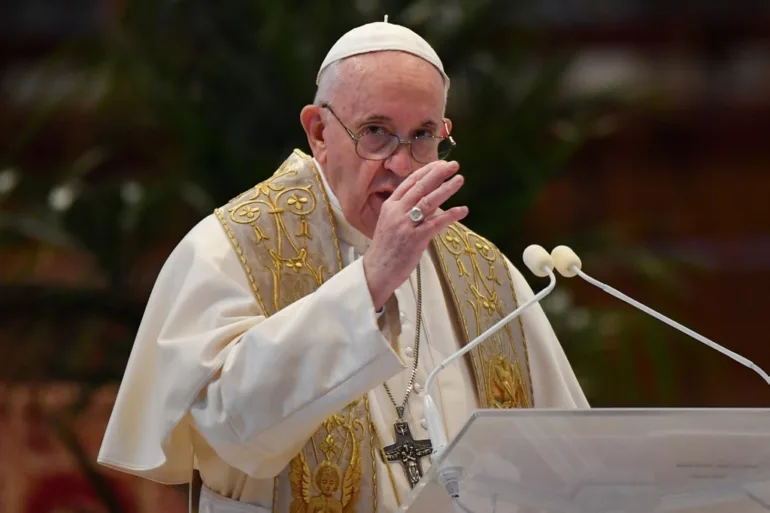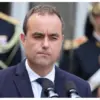The death of Pope Francis on Monday has set in motion the centuries-old rituals of the Roman Catholic Church that will lead to the election of a new pope — though with a few modern adaptations introduced by Francis himself.
Sede Vacante (The vacant See)
With the Holy See now officially vacant, the Church enters a period known as Sede Vacante, during which the governance of the Vatican temporarily shifts. Daily affairs are overseen by the Camerlengo, or chamberlain — in this case, Cardinal Kevin Farrell, the Irish-American prelate appointed to the role by Pope Francis in 2019.
Following tradition, the camerlengo formally certifies the pope’s death. In the past, this was done by tapping the pope’s forehead three times with a silver hammer while calling out his baptismal name. While largely symbolic today, the ritual marks the beginning of the transition.
The camerlengo also supervises the destruction of the Fisherman’s Ring, the unique signet ring of each pope, once used to seal official documents. Its destruction, now ceremonial, is conducted in the presence of cardinals to signify the end of the deceased pope’s authority.
Upon the pope’s death, all senior Vatican officials must resign their posts — except for the camerlengo — until a new pontiff is elected.
A simpler farewell: Pope Francis’s funeral
In keeping with his humble image and desire to redefine the papacy as a role of service rather than power, Pope Francis requested several key changes to traditional funeral rites.
Unlike his immediate predecessors, who were buried in St. Peter’s Basilica, Francis asked to be interred at Santa Maria Maggiore, a historic basilica in Rome to which he had a deep spiritual connection.
He also requested simpler burial arrangements. Rather than the customary three nested coffins made of cypress, lead, and elm, Francis will be laid to rest in a single coffin of wood and zinc — reflecting his belief that the pope is “a pastor and disciple of Christ, not a powerful man of the world.”
His body will lie in St. Peter’s Basilica in an open coffin for public veneration, marking a break from the tradition of displaying deceased popes on elevated platforms, propped by cushions.
The pope’s burial is to take place between the fourth and sixth day after his death. Cardinals from around the world will also organize the traditional “novemdiales”, the nine days of mourning.
The conclave: Choosing the next pope
Before a new pontiff is elected, cardinals under the age of 80 will gather in a series of meetings known as general congregations to discuss the state of the Church and vet potential successors — the so-called papabili.
The conclave — the secretive process of electing a new pope — will begin no earlier than 15 days and no later than 20 days after Francis’s death.
There are currently 135 cardinal electors, 108 of whom were appointed by Pope Francis. Of these 53 are from Europe, 20 are from North America, 18 are from Africa, 23 from Asia, four from Oceania and 17 from South America.
The conclave, held in the Sistine Chapel beneath Michelangelo’s famed ceiling, is rooted in tradition dating back to the 13th century. The word “conclave” comes from the Latin cum clave — “with a key” — referring to the cardinals being locked in until a decision is made.
Voting takes place twice in the morning and twice in the afternoon. A candidate must receive two-thirds of the votes to be elected.
At the end of each voting session, the ballots are burned in a special stove. The color of the smoke rising from the Sistine Chapel signals the outcome: black smoke for an inconclusive vote, white smoke for a successful one. The bells of St. Peter’s Basilica also ring to confirm the election.
Habemus Papam! – “We have a Pope”
Once a candidate has received the necessary votes, he is asked by the Dean of the College of Cardinals, currently Cardinal Giovanni Battista Re, whether he accepts the election and which name he wishes to take.
The newly elected pope is then led into a small room beside the Sistine Chapel known as the “Room of Tears”, where he reflects briefly and changes into papal vestments — three sizes of which are prepared in advance.
Afterward, each cardinal approaches the new pontiff to offer homage.
Soon after, the senior cardinal deacon, currently Cardinal Renato Raffaele Martino, steps out onto the balcony of St. Peter’s Basilica and delivers the historic proclamation to the world:
“Habemus Papam!” – “We have a pope!”
Moments later, the new pope appears before the faithful gathered in St. Peter’s Square, offering his first apostolic blessing as the bishop of Rome and leader of the Catholic Church.
AFP


